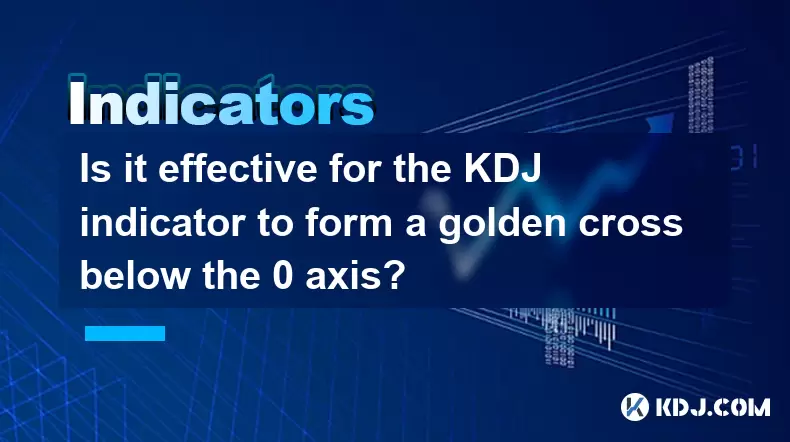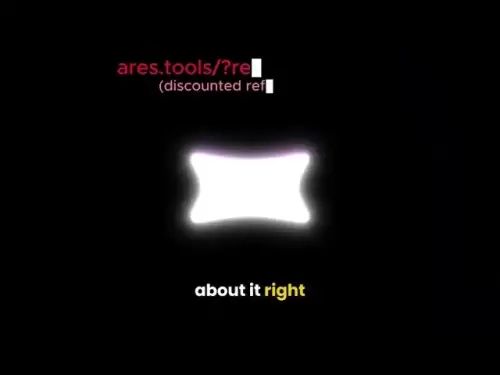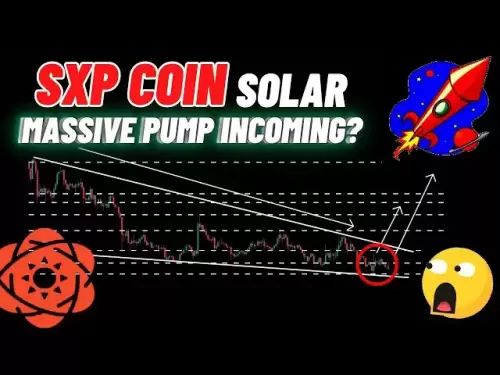-
 Bitcoin
Bitcoin $117500
2.04% -
 Ethereum
Ethereum $3759
3.02% -
 XRP
XRP $3.171
3.30% -
 Tether USDt
Tether USDt $1.000
0.03% -
 BNB
BNB $782.4
2.52% -
 Solana
Solana $187.2
5.62% -
 USDC
USDC $0.0000
0.02% -
 Dogecoin
Dogecoin $0.2380
5.26% -
 TRON
TRON $0.3175
1.07% -
 Cardano
Cardano $0.8227
4.03% -
 Hyperliquid
Hyperliquid $44.50
5.44% -
 Sui
Sui $4.020
10.07% -
 Stellar
Stellar $0.4396
6.28% -
 Chainlink
Chainlink $18.32
4.55% -
 Hedera
Hedera $0.2628
10.71% -
 Bitcoin Cash
Bitcoin Cash $554.8
4.90% -
 Avalanche
Avalanche $24.20
4.60% -
 Litecoin
Litecoin $113.7
2.31% -
 Shiba Inu
Shiba Inu $0.00001413
5.99% -
 UNUS SED LEO
UNUS SED LEO $8.984
0.11% -
 Toncoin
Toncoin $3.326
7.22% -
 Ethena USDe
Ethena USDe $1.001
0.00% -
 Uniswap
Uniswap $10.49
4.56% -
 Polkadot
Polkadot $4.092
4.02% -
 Monero
Monero $326.6
1.30% -
 Dai
Dai $1.000
-0.01% -
 Bitget Token
Bitget Token $4.570
2.49% -
 Pepe
Pepe $0.00001267
5.10% -
 Aave
Aave $297.3
3.10% -
 Cronos
Cronos $0.1344
4.10%
Is it effective for the KDJ indicator to form a golden cross below the 0 axis?
A KDJ golden cross below 20—often mistaken as "below 0"—signals potential bullish reversal in oversold crypto markets, especially when confirmed by volume and higher timeframe trends.
Jul 26, 2025 at 07:28 am

Understanding the KDJ Indicator and Its Components
The KDJ indicator is a momentum oscillator widely used in cryptocurrency technical analysis to identify overbought and oversold conditions. It consists of three lines: the %K line, the %D line, and the %J line. The %K line is the fastest, reflecting the current price momentum relative to recent price ranges. The %D line is a moving average of %K, making it smoother, while the %J line represents the divergence of %K from %D and is the most volatile. These lines fluctuate between 0 and 100, with values below 20 typically indicating oversold conditions and values above 80 suggesting overbought levels.
In the context of cryptocurrency trading, the KDJ is especially useful due to the high volatility of digital assets. Traders monitor the interactions between the %K and %D lines to generate buy and sell signals. A golden cross occurs when the %K line crosses above the %D line, which is generally interpreted as a bullish signal. However, the effectiveness of this signal depends heavily on the position of the cross relative to key threshold levels, such as the 20, 50, and 80 lines.
Interpreting the Golden Cross Below the 0 Axis
A common misconception arises when traders refer to the KDJ forming a golden cross "below the 0 axis." This phrasing is technically inaccurate, as the KDJ indicator operates within a 0 to 100 range, meaning values cannot fall below 0. If a chart displays a KDJ value below 0, it may result from a misconfigured indicator, incorrect scaling, or confusion with another oscillator such as MACD. Therefore, a golden cross occurring below the 0 axis is not possible under standard KDJ settings.
What traders likely mean is a golden cross occurring in the oversold region, typically below the 20 level. This scenario is more plausible and significant. When the %K and %D lines are both below 20 and the %K line crosses above the %D line, it may signal a potential reversal from an oversold condition. In cryptocurrency markets, where prices can rapidly swing due to sentiment and liquidity shifts, such a cross might indicate short-term buying pressure returning.
Assessing Signal Reliability in Cryptocurrency Markets
The reliability of a KDJ golden cross in the oversold zone depends on several factors. First, market context plays a crucial role. In a strong downtrend, a golden cross below 20 may result in a false signal if broader selling pressure persists. Conversely, during a consolidation phase or after a sharp drop, the same signal could precede a meaningful bounce.
Volume confirmation is essential. A golden cross accompanied by increasing trading volume on a cryptocurrency exchange enhances the signal's credibility. For instance, if Bitcoin’s price drops sharply, KDJ lines fall below 20, and then a golden cross forms with rising volume on Binance or Coinbase, the probability of a short-term upward move increases.
Another consideration is timeframe alignment. A golden cross on a 1-hour chart may be less significant than one appearing on a 4-hour or daily chart. Traders should examine higher timeframes to determine whether the signal aligns with broader momentum. For example, if the daily KDJ is also exiting oversold territory, the 4-hour golden cross gains more weight.
Step-by-Step Guide to Validating a KDJ Golden Cross Signal
To effectively use the KDJ golden cross in crypto trading, follow these steps:
- Open your preferred trading platform, such as TradingView or MetaTrader, and load the price chart of the cryptocurrency you're analyzing (e.g., Ethereum or Solana).
- Apply the KDJ indicator from the indicators menu, ensuring the default parameters (typically 9,3,3) are used unless you have a tested alternative.
- Observe the KDJ panel beneath the price chart and confirm that both the %K and %D lines are below the 20 threshold.
- Watch for the moment when the %K line (usually the faster, more responsive line) moves upward and crosses above the %D line.
- Check the corresponding price action: has the candlestick pattern shown signs of reversal, such as a bullish engulfing or hammer formation?
- Verify volume data: is there a noticeable increase in trading volume coinciding with the cross?
- Cross-reference with support levels: is the price near a known support zone, such as a previous swing low or a Fibonacci retracement level?
Only when multiple conditions align should the signal be considered actionable.
Common Misinterpretations and How to Avoid Them
One frequent error is mistaking a divergence between price and KDJ for a golden cross. For example, if the price makes a lower low but the KDJ forms a higher low, this is bullish divergence, not a golden cross. While both can signal reversals, they are distinct concepts.
Another pitfall is ignoring overlapping signals. In volatile crypto markets, the KDJ may generate multiple golden crosses in quick succession during choppy price action. Traders must filter these by using additional tools like moving averages or RSI to confirm momentum.
Misreading the scale is also common. Some platforms may display KDJ values with a different baseline or allow negative values due to custom formulas. Always ensure the indicator is set to the standard 0–100 range to avoid false readings.
Integrating the KDJ Signal with Other Technical Tools
To enhance the accuracy of a KDJ golden cross below 20, combine it with complementary indicators. The Relative Strength Index (RSI) can confirm oversold conditions—look for RSI below 30 alongside the KDJ cross. Similarly, Bollinger Bands can help: if the price touches the lower band while KDJ shows a golden cross, the reversal probability increases.
Moving averages provide trend context. If the price is above the 50-period EMA on the 4-hour chart, a golden cross in the oversold zone carries more bullish weight. Conversely, if the price remains below the 200-period SMA, the signal may be weaker.
Support and resistance zones derived from historical price data or on-chain metrics (like exchange inflows) can further validate the setup. For example, if a golden cross forms as Bitcoin approaches a support level where large wallet movements have previously triggered rebounds, the signal gains credibility.
FAQs
Can the KDJ indicator go below 0 in any legitimate scenario?
No, under standard calculation methods, the KDJ indicator is bounded between 0 and 100. Any reading below 0 suggests a platform error, incorrect formula input, or confusion with another indicator.
What should I do if a golden cross appears but volume is decreasing?
A golden cross with declining volume is suspect. It may indicate weak buying interest. Avoid entering a position until volume confirms the move, or seek additional confirmation from price action or other indicators.
Is the KDJ more effective on certain cryptocurrencies?
The KDJ works best on highly liquid and volatile assets like Bitcoin and Ethereum, where price movements are pronounced. It may generate excessive noise on low-cap altcoins with erratic trading patterns.
How long should I wait after a golden cross to confirm a trend reversal?
There is no fixed duration. Monitor the next 1–3 candlesticks for sustained upward movement and higher highs. If the price fails to advance or the KDJ lines turn down again, the signal may have failed.
Disclaimer:info@kdj.com
The information provided is not trading advice. kdj.com does not assume any responsibility for any investments made based on the information provided in this article. Cryptocurrencies are highly volatile and it is highly recommended that you invest with caution after thorough research!
If you believe that the content used on this website infringes your copyright, please contact us immediately (info@kdj.com) and we will delete it promptly.
- Vaultz Capital's Bitcoin Bet: A Strategic Shift on the Aquis Exchange
- 2025-07-26 20:30:12
- Pi Coin, Wallet Features, and Coinbase: What's the Buzz?
- 2025-07-26 18:30:12
- Worldcoin, Punisher Coin, and the Meme Coin Mania: What's the Haps?
- 2025-07-26 18:30:12
- Conviction, Justice System, and Murders: A Look at Recent Cases and Shifting Perspectives
- 2025-07-26 18:50:11
- Shiba Inu, Remittix, and the Market Surge: What's the Hype?
- 2025-07-26 19:10:12
- Cardano Price, ADA Holders, and Leadership Criticism: What's the Real Deal?
- 2025-07-26 19:30:12
Related knowledge

What does it mean that the rebound is blocked after the moving average is arranged in a short position for the first time?
Jul 26,2025 at 10:51am
Understanding the Short-Term Moving Average ConfigurationWhen traders refer to a 'short position arrangement' in moving averages, they are describing ...

What does it mean that the parabolic indicator and the price break through the previous high at the same time?
Jul 26,2025 at 07:22pm
Understanding the Parabolic Indicator (SAR)The Parabolic SAR (Stop and Reverse) is a technical analysis tool developed by J. Welles Wilder to identify...

What does it mean when the price rises along the 5-day moving average for five consecutive days?
Jul 26,2025 at 08:07am
Understanding the 5-Day Moving Average in Cryptocurrency TradingThe 5-day moving average (5DMA) is a widely used technical indicator in cryptocurrency...

What does it mean when ADX breaks through 25 and +DI continues to rise?
Jul 26,2025 at 07:00pm
Understanding the ADX Indicator and Its ThresholdsThe Average Directional Index (ADX) is a technical analysis tool used to measure the strength of a t...

What does it mean when the price breaks through the 60-day moving average with a large volume but shrinks the next day?
Jul 26,2025 at 06:01am
Understanding the 60-Day Moving Average in Cryptocurrency TradingThe 60-day moving average (60DMA) is a widely used technical indicator in the cryptoc...

What does the sudden rise of ADX in DMI accompanied by +DI crossing -DI indicate?
Jul 26,2025 at 01:21pm
Understanding the DMI and Its Core ComponentsThe Directional Movement Index (DMI) is a technical analysis tool used to determine the presence and stre...

What does it mean that the rebound is blocked after the moving average is arranged in a short position for the first time?
Jul 26,2025 at 10:51am
Understanding the Short-Term Moving Average ConfigurationWhen traders refer to a 'short position arrangement' in moving averages, they are describing ...

What does it mean that the parabolic indicator and the price break through the previous high at the same time?
Jul 26,2025 at 07:22pm
Understanding the Parabolic Indicator (SAR)The Parabolic SAR (Stop and Reverse) is a technical analysis tool developed by J. Welles Wilder to identify...

What does it mean when the price rises along the 5-day moving average for five consecutive days?
Jul 26,2025 at 08:07am
Understanding the 5-Day Moving Average in Cryptocurrency TradingThe 5-day moving average (5DMA) is a widely used technical indicator in cryptocurrency...

What does it mean when ADX breaks through 25 and +DI continues to rise?
Jul 26,2025 at 07:00pm
Understanding the ADX Indicator and Its ThresholdsThe Average Directional Index (ADX) is a technical analysis tool used to measure the strength of a t...

What does it mean when the price breaks through the 60-day moving average with a large volume but shrinks the next day?
Jul 26,2025 at 06:01am
Understanding the 60-Day Moving Average in Cryptocurrency TradingThe 60-day moving average (60DMA) is a widely used technical indicator in the cryptoc...

What does the sudden rise of ADX in DMI accompanied by +DI crossing -DI indicate?
Jul 26,2025 at 01:21pm
Understanding the DMI and Its Core ComponentsThe Directional Movement Index (DMI) is a technical analysis tool used to determine the presence and stre...
See all articles

























































































